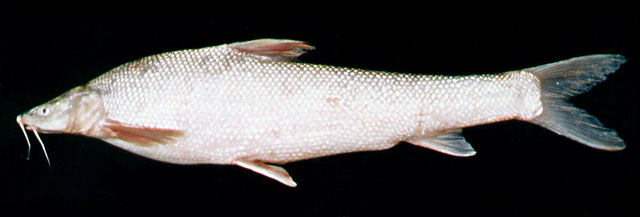| Cyprinidae (Minnows or carps), subfamily: Barbinae |
| 90 cm TL (male/unsexed); 105 cm TL (female); max.weight: 22 kg |
|
benthopelagic; freshwater; brackish, potamodromous |
| Europe and Asia: Southern and western Caspian Sea; Aral basin; River Chun (Kasakhstan). For spawning, migrates up to larger tributaries of western and southern coasts: Terek, Samur, Kura, lower Aras. Rarely in lower Volga (up to Volgograd) and Ural. |
|
Diagnosed from other species of Barbus and Luciobarbus in Caspian Se basin by having the following characters: predorsal length shorter than postdorsal length; dorsal fin usually with 7½ branched rays; 16-25 gill rakers; back between head and dorsal origin laterally compressed, forming a keel; lateral line with 62-90 (usually 65-77) scales; and lower lip thin, without median lobe or pad (Ref. 59043). |
| Found in rivers, reservoirs, lakes and canals (Ref. 11145). Occurs in the sea at depths of up to 25 m and in rivers in deep stretches with gravel or stone bottom. In freshened parts of sea, preys mainly on benthic crustaceans. Does not feed while migrating upstream and starts to feed again at the spawning sites mainly on insects, juveniles of other fishes, rarely on algae, seeds and other plant material. Spawns in fast-flowing water at areas with hard bottom and depths of 1-2 m (Ref. 59043). |
|
Endangered (EN); Date assessed: 02 March 2021 (Endangered) Ref. (130435)
|
| harmless |
Source and more info: www.fishbase.org. For personal, classroom, and other internal use only. Not for publication.
